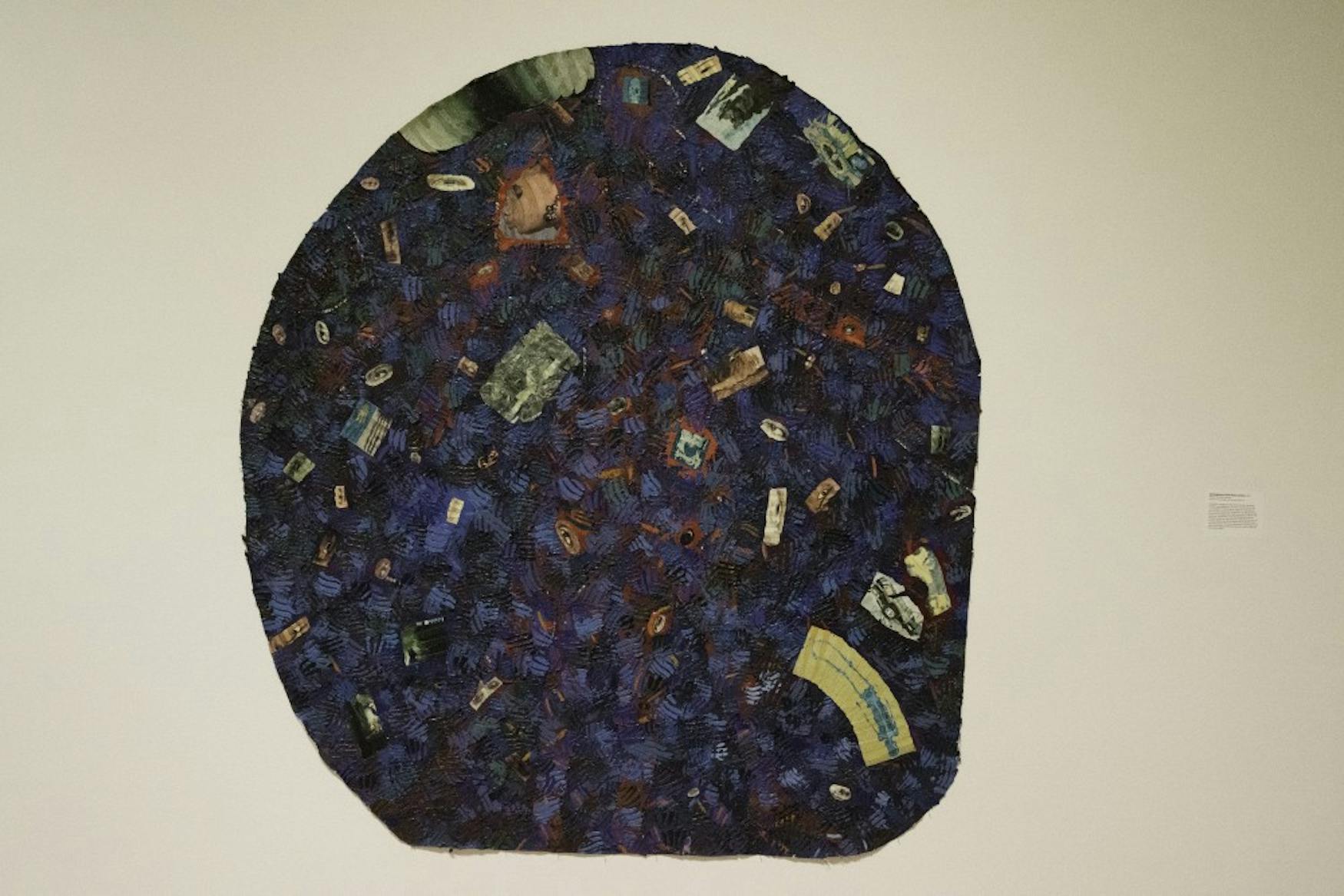JustArts SPOTLIGHT ON THE ROSE
In 1979, American artist Howardena Pindell was in an almost-fatal car accident. According to a plaque with a description of her art, as she laid there trapped in her car, “onlookers watched, too hesitant to help because the punctured gas tank might explode.”
Just under ten years later, she produced “Autobiography: Earth (Eyes, Injuries)” based on the accident. Like many of her other works, this piece is a collage. However, unlike the others, she uses no words. The background is full of dark, greens, blues, purples and reds. On top, Pindell resemble images of dismembered body parts among other depictions reminiscent of a fiery car crash. The text next to the piece states that she created this by tracing her body onto a piece of canvas, cutting out the tracing, and then separately sewing the pieces onto a background.
The tracings are placed sporadically, seemingly with no order, while the dark colors that fill the spaces make them stand out. The whole piece brings to mind images of what might have happened if Pindell’s car had actually exploded. Like the title indicates, most of the parts appear to be eyes. All of them are looking in different directions, as if they are searching for something.
The darting eyes give of the impression of being nervous or scared, suggesting that Pindell is searching for somebody or something, but not knowing what is she looking for. This could be purposefully done since after the car accident, according to a Feb. 6, 2018 article in ARTnews, “she had trouble remembering people from her distant past and barely recognized the voices of her loved ones.”
Time and time again, Howardena Pindell’s art surprises and draws audiences in through her ability to honestly present her version of reality. The way in which she depicts her emotions and successfully connects with viewers in “Autobiography: Earth (Eyes, Injuries),” makes it no exception.



Please note All comments are eligible for publication in The Justice.